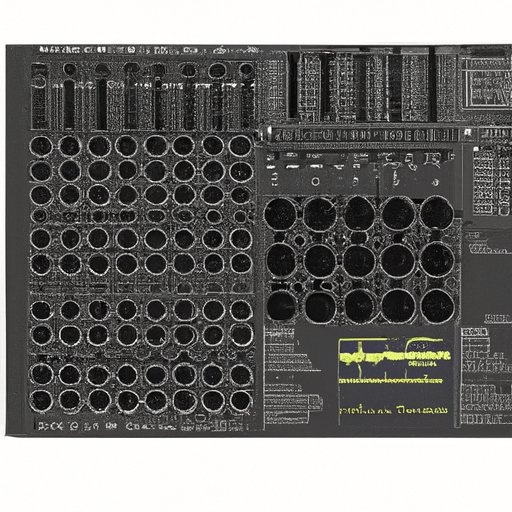Introduction
The importance of midrange in music cannot be overstated. It’s the frequency range that carries the main elements of a track, including vocals, guitars, and drums. Without a well-balanced midrange, your mix can sound muddy, unclear, and uninteresting. In this article, we’ll explore how to find midrange in music and provide tips, techniques, and tools to help you master this essential element of music production.
The importance of midrange in music and how to find it
Why do midrange frequencies matter? Because they carry the core elements of a track. Without emphasis on the midrange, the vocals, guitars, drums, and other critical components of the mix can get lost in the mix. One way to identify midrange frequencies in a track is to use a visual EQ analyzer such as the FabFilter Pro-Q or Waves F6. These tools can help you identify the peak frequencies in the midrange and adjust them accordingly.
If you’re using a DAW such as Logic Pro X or Ableton Live, you can use the built-in EQ plugins to boost or cut midrange frequencies. For example, in Logic Pro X, you can use the channel equalizer to adjust the midrange by selecting the “M” button on each band and dragging the frequency and gain sliders.
How to EQ your mix for a balanced midrange
Once you’ve identified the midrange frequencies in your mix, the next step is to adjust the EQ settings to achieve a balanced midrange. The best approach is to use a combination of cuts and boosts to create a smooth and natural sound. A good starting point is to cut the low and high frequencies by 1-2 dB and add a boost of 2-3 dB to the midrange.
As you adjust the EQ settings, it’s essential to listen to the changes and hear how the mix sounds. Use your ears, not just your eyes, to determine the right balance. Experiment with different EQ settings, and don’t be afraid to make drastic changes if necessary. Always remember that there’s no right or wrong way to EQ a mix. The key is to achieve a sound that works for the track and makes it stand out.
To help illustrate the impact of EQ adjustments on the midrange, here are a few examples:
- Before EQ: The vocals sound buried in the mix, and the guitars are too bright.
- After EQ: The vocals are now more prominent, and the guitars sit better in the mix.
Understanding the psychology of midrange in human sound perception
How do midrange frequencies impact our perception of sound? The science behind this concept is fascinating. Midrange frequencies are the most sensitive to our ears, making them essential for sound perception. They also play a crucial role in how we perceive emotions and mood in music. That’s why getting the midrange right is so important to deliver a clear and engaging listening experience.
Practical tips for applying this understanding to music production include using compression to bring conflicting elements in your mix together. Parallel processing and sidechain compression are excellent techniques to boost sounds, bring them into focus, or add harmonics to the upper ranges. Dynamic EQs are another option to help even out the mix’s frequency range while also taking care of potential phase issues by fine-tuning your midrange frequencies.
The role of midrange in speaker selection
The midrange response is a vital factor when selecting speakers. A flat frequency response between 500 Hz and 2000 Hz is recommended, although this can vary depending on personal preference. Speaker manufacturers such as Kef, Monitor Audio, and Focal are renowned for producing speakers that excel at midrange reproduction, making them great options for accurate and balanced mixing.
When purchasing speakers, it’s essential to evaluate the overall sound quality and make sure that they can deliver a clear and natural midrange. To test this, listen to your favorite tracks and try to identify the midrange instruments, such as the vocals, guitars, and drums. If these elements are clear and well-defined in the mix, the speakers are likely to reproduce a balanced midrange.
Mastering the midrange
Once you’ve mastered the basics of midrange frequency control, there are advanced techniques you can use to manipulate the midrange further. Dynamic EQ is a powerful tool that can help even out the frequency range while also taking care of potential phase issues by fine-tuning your midrange frequencies. Sidechain compression is an excellent way to create space for midrange-heavy tracks, while parallel processing can add warmth and depth to your mix.
Conclusion
To achieve a great sounding mix, mastering the midrange is essential. With the right tools, techniques, and knowledge, you can control the frequency range to produce a balanced and clear sound that engages listeners.
We hope this article has provided you with valuable tips and insights to help you master the midrange. Remember to trust your ears and experiment with different settings until you achieve a sound that works for you.
